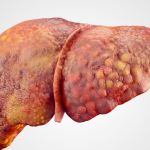Atopic Dermatitis & Babies: Two Cases Substituting Goat Milk Formula for Cow Milk Formula
Annie Salsberg, ND
While anecdotal information on the clinical benefits associated with goat milk is common among naturopathic doctors, systematic documentation of its effects is limited. This report primarily describes the improvement of symptoms associated with atopic dermatitis in two 11-month-old children over 12 and 21 days, respectively, where goat milk formula was used as a substitute for cow milk formula.
Symptom improvement suggests that goat milk formula may be an appropriate clinical substitute for cow milk formula in some children with cow’s milk-related symptoms, such as atopic dermatitis.
Two Case Studies
GW is an 11-month-old male who presented with mild symptoms consistent with atopic dermatitis (AD) on his upper arms and face, and moderately over his legs. The mother made a temporal association between the onset of AD symptoms at 7 months and the transition during weaning from exclusive breastfeeding to cow milk formula. In addition to skin symptoms, GW also experienced chronic regurgitation, loose stools, respiratory congestion, and recurrent otitis media.
CR is an 11-month-old male who presented with a single, persistent concern of AD since early infancy. The mother had supplemented breastfeeding with cow milk formula since birth. Symptoms were characterized as moderate to severe over his legs, and mild to moderate over his trunk, arms, and neck.
Symptom Assessment
Diagnostic and assessment methods involved the mothers’ qualitative report of her child’s symptoms, quantified by the Cow’s Milk Symptom Score (CoMiSS). CoMiSS is a symptom-based assessment tool designed to quickly and simply screen for the presence of cow milk-related symptoms and risk for cow milk protein allergy (CMPA).1 The CoMiSS score, quantifying the number and severity of symptoms, was developed by consensus through 18 participants from 14 different hospital sites. While CMPA affects only 2-3% of children under 6,2 a quantitative online survey investigating the prevalence of cow milk-related symptoms suggests that cow milk sensitivity may affect up to 30% of children under 6.3
Symptom intensity using the CoMiSS was captured at baseline and then again at 12 and 21 days, respectively. Scoring ranges from 0-33. A score of 12 is based on the presence of 2 severe symptoms, while a score higher than 12 is based on the presence of >3 symptoms and the involvement of >2 organ systems, and identifies infants at risk of CMPA.1
Clinical Findings at Baseline
At baseline, GW’s total CoMiSS was 12. Specific symptom intensity included: a regurgitation score of 2/6, which is >5 episodes of >1 tsp (5 mL) daily; a Bristol stool score of 4/6, which is type 6, or liquid stool; a total skin score of 3/6, which included mild symptoms on the upper arms and face, and moderate symptoms over the legs; and, a respiratory score of 3/3, which is characterized as severe.
At baseline, CR’s total CoMiSS was 3. Specific symptom intensity included: a total skin score of 3/6, which included mild symptoms on the upper arms and face, and moderate symptoms over the legs.
Therapeutic Intervention
As the mothers report no other apparent precipitating or aggravating factor in the etiology of symptoms, the role of diet, specifically cow milk, is emphasized here. The therapeutic intervention involved the elimination of all cow milk dairy – including cow milk formula – from both GW and CR’s diets; goat milk formula was used as a substitute for cow milk formula. The amount of goat milk formula consumed was consistent with the previous volume of cow milk formula.
Significant Improvement
On Day 12, GW’s total CoMiSS reduced to 3, a 9-point positive change, or 75% improvement, from baseline. The regurgitation score was 0/6, a 33% reduction on CoMiSS – a 100% absolute improvement from baseline. Stool was reported as type 3 or 4 (normal), a score of 0/6, a 66% reduction on CoMiSS – a 100% absolute improvement from baseline. The mother reported that GW experienced normal, solid, and well-formed bowel movements from Day 9 on goat milk formula. Respiratory symptoms were reported as mild at 2/3 – a 33% reduction on CoMiSS or absolute improvement from baseline. Moreover, atopic dermatitis symptoms improved within 4 days of making the switch to a goat milk formula. Skin symptoms resolved completely on the arms and face, and remained mild on the legs, for a total score of 1/6 – a 33% reduction on CoMiSS, or a 66% absolute improvement from baseline.
On Day 21, CR’s skin symptoms also resolved completely on the arms and face, and remained mild on the legs, for a total score of 1/6 – a 33% reduction on CoMiSS, or a 66% absolute improvement from baseline.
Discussion
Atopic dermatitis affects between 10-20% of children in the United States.4 Dietary factors have been shown to exacerbate atopic dermatitis in some children,5 with key aggravating foods including cow milk, gluten, soy, and eggs. There is a large body of research that reports on the positive association between cow milk consumption and dermatological symptoms,2,6-8 such as atopic dermatitis. Despite these findings, cow milk elimination is not a routine allopathic therapeutic intervention for this very common pediatric concern. As goat milk protein is more digestible9-12 and less immunogenic13,14 than cow milk protein, it may be a solution for children with atopic dermatitis associated with cow milk consumption.
Goat milk protein possesses several positive attributes. It contains less alpha s1-casein than cow milk,15 and its casein micelles are larger than casein micelles from cow milk.15 As a result, goat milk protein produces a smaller, softer, and looser coagulate (curd) in the gut than cow milk protein,9,10 and it is also digested more quickly than cow milk protein.12
Goat milk protein is associated with stool characteristics that resemble those of infants fed breast milk.11 A smaller, softer and looser curd, coupled with faster protein digestion, may limit irritation to the gut mucosa and systemic inflammatory symptoms, such as atopic dermatitis, that may be associated with intestinal hyperpermeability.
The primary limitation involved in these cases is that neither the mothers nor clinician were blinded to the intervention, and that 12 and 21 days may be inadequate to appreciate longer-term effects associated with a goat milk formula.
Conclusions
Goat milk formula appears to be an appropriate substitute for cow milk formula in these 2 children. Children with cow milk-related symptoms, such as atopic dermatitis, regurgitation, and loose stools, may experience rapid symptom improvement by substituting cow milk formula with goat milk formula.
Further research is necessary to evaluate the longer-term impact of goat milk formula in the management of other cow milk-related symptoms, such as respiratory congestion and recurrent otitis media. Goat milk formula can be considered as part of a diet management plan for children with cow milk-related symptoms.*
*Not suitable for children with a confirmed cow milk protein allergy (CMPA).
 Annie Salsberg, ND, graduated from the Canadian College of Naturopathic Medicine in 2005. She previously worked as part-time clinic and academic faculty at CCNM, supervising student interns in the Robert Schad Naturopathic Clinic. After completing her undergraduate degree from McGill University with a focus in Social Studies of Medicine, Annie held research positions in Women’s Health and Child Psychology at Toronto General Hospital and The Hospital for Sick Children. A belief in the connection between mind, body, and environment propelled her to pursue a career in naturopathic medicine. Currently, Annie is the Nutritional Sciences and Education Manager at KABRITA USA.
Annie Salsberg, ND, graduated from the Canadian College of Naturopathic Medicine in 2005. She previously worked as part-time clinic and academic faculty at CCNM, supervising student interns in the Robert Schad Naturopathic Clinic. After completing her undergraduate degree from McGill University with a focus in Social Studies of Medicine, Annie held research positions in Women’s Health and Child Psychology at Toronto General Hospital and The Hospital for Sick Children. A belief in the connection between mind, body, and environment propelled her to pursue a career in naturopathic medicine. Currently, Annie is the Nutritional Sciences and Education Manager at KABRITA USA.
References
- Vandenplas Y, Dupont C, Eigenmann P, et al. A workshop report on the development of the Cow’s Milk-related Symptom Score awareness tool for young children. Acta Paediatr. 2015;104(4):334-339.
- Koletzko S, Niggeman B, Arato A, et al. Diagnostic approach and management of cow’s milk protein allergy in infants and children: a practical guideline of the GI-committee of ESPGHAN. J Pediatr Gastroenterol Nutr. 2012;55(2):221-229.
- Cow Milk Related Symptoms Survey. Survey Monkey Web site. https://www.surveymonkey.net/results/SM-H9MQL86D/. Accessed December 15, 2015.
- Watson W, Kapur S. Atopic Dermatitis. Allergy Asthma Clin Immunol. 2011;7 Suppl 1:S4.
- Katta R, Schlichte M. Diet and dermatitis: food triggers. J Clin Aesthet Dermatol. 2014;7(3):30-36.
- Vandenplas Y, Koletzko S, Isolauri E, et al. Guidelines for the diagnosis and management of cow’s milk protein allergy in infants. Arch Dis Child. 2007;92(10):902-908.
- Lifschitz C, Szajewska H. Cow’s milk allergy: evidence-based diagnosis and management for the practitioner. Eur J Pediatr. 2015;174(2):141-150.
- Høst A. Cow’s milk protein allergy and intolerance in infancy. Some clinical, epidemiological and immunological aspects. Pediatr Allergy Immunol. 1994;5(5 Suppl):1-36.
- Ceballos L, Morales ER, Martinez LP, et al. Utilization of nitrogen and energy from diets containing protein and fat derived from either goat milk or cow milk. J Dairy Res. 2009;76(4):497-504.
- Grant C, Rotherham B, Sharpe S, et al. Randomized, double-blind comparison of growth in infants receiving goat milk formula versus cow milk infant formula. J Paediatr Child Health. 2005;41(11):564-568.
- Han Y, Chang EY, Kim J, et al. Association of infant feeding practices in the general population with infant growth and stool characteristic. Nutr Res Pract. 2011;5(4):308-312.
- Almaas H, Cases AL, Devold TG, et al. In vitro digestion of bovine and caprine milk by human gastric and duodenal enzymes. Int Dairy J. 2006;16(9):961-968.
- Bellioni-Businco B, Paganelli R, Lucenti P, et al. Allergenicity of goat’s milk in children with cow’s milk allergy. J Allergy Clin Immunol. 1999;103(6):1191-1194.
- Lara-Villoslada F, Olivares M, Jimenez J, et al. Goat milk is less immunogenic than cow milk in a murine model of atopy. J Pediatr Gastroenterol Nutr. 2004;39(4):354-360.
- Park Y, Juarez M, Ramos M, et al. Physico-chemical characteristics of goat and sheep’s milk. Small Ruminant Research. 2007;68(102):88-113.









